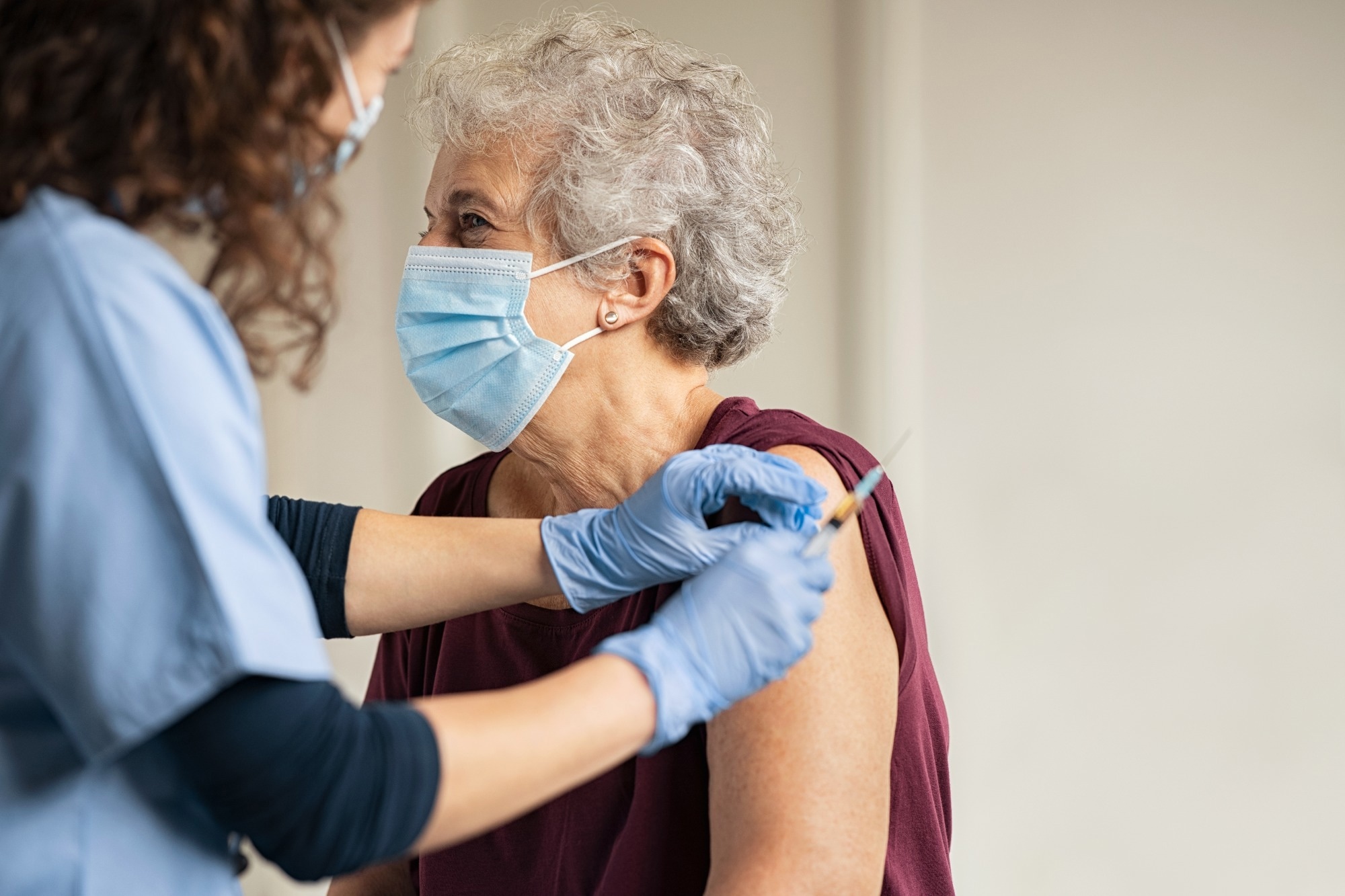International scientists have evaluated molecular mechanisms responsible for heterogeneous responses to influenza vaccination among older adults. They have identified potential immunological mediators that suppress the production of vaccine-induced antibodies.
The study is currently available on the MedRxiv* preprint server.
 Study: Systems immunology reveals the molecular mechanisms of heterogeneous influenza vaccine response in the elderly. Image Credit: GroundPicture/Shutterstock.com
Study: Systems immunology reveals the molecular mechanisms of heterogeneous influenza vaccine response in the elderly. Image Credit: GroundPicture/Shutterstock.com

 *Important notice: medRxiv publishes preliminary scientific reports that are not peer-reviewed and, therefore, should not be regarded as conclusive, guide clinical practice/health-related behavior, or treated as established information.
*Important notice: medRxiv publishes preliminary scientific reports that are not peer-reviewed and, therefore, should not be regarded as conclusive, guide clinical practice/health-related behavior, or treated as established information.
Background
Influenza infection causes more than 400,000 deaths annually worldwide. Inactivated subunit influenza vaccination is the best preventive and cost-effective measure to control disease severity and transmission.
Although the virus causes mild to severe respiratory infections in people of any age, older adults exhibit higher susceptibility to developing severe and often life-threatening infections.
Moreover, a reduced and heterogeneous vaccine response has been observed among older adults, mostly because of age-related suppression of immune activities.
In the current study, scientists evaluated the heterogeneity of responsiveness to influenza vaccination in older adults across two independent influenza seasons.
The study longitudinally examined 234 older adults aged 65 years and above who had received trivalent inactivated influenza vaccine. Blood samples collected from the participants at five time points were analyzed to generate a multimodal dataset, including multi-omics and immunological parameters.
Important observations
Estimating antibody titers in the blood samples revealed heterogeneity among the elderly participants.
Based on antibody titers, participants were categorized into three groups, i.e., triple responders (high antibody response against all three vaccine strains), non-responders (low antibody response against all three vaccine strains), and others (high antibody response against one or two vaccine strains).
The generation and analysis of transcriptomic data from 10 triple responders and 10 non-responders identified 1,466 differentially expressed genes.
Functional analysis of these genes revealed a consistent upregulation of T- and B-cell-related pathways and T-cell activation pathways in triple responders. In contrast, a consistent upregulation of inflammatory pathways was observed in non-responders.
At the pre-vaccination timepoint, the transcriptomic data revealed a gene expression pattern associated with immune cells involved in antibody response in triple responders. In contrast, in non-responders, a consistently upregulated inflammatory signature was observed.
At post-vaccination time points, the transcriptomic data revealed induction of antiviral immune response in triple responders at different time points. However, non-responders showed a consistent inflammatory response at all time points.
The greatest change in gene expression profile was observed at day seven post-vaccination in triple responders. At this time, clonal expansion of plasma cells was observed in triple responders but not non-responders.
While triple responders showed a transient induction in plasma cell proportions, higher proportions and activation of natural killer (NK) cells were observed in non-responders at this time point.
The proteomic data analysis identified changes in protein abundance in both triple responders and non-responders at day seven post-vaccination. Proteins with upregulated profiles in triple responders were associated with B cell proliferation and plasma cell differentiation.
In non-responders, upregulated proteins were associated with oxidative stress-induced inflammation, NK cell recruitment, and anti-inflammatory activities.
The metabolomic data analysis revealed a significantly increased abundance of amino acids in triple responders at days seven and 35 post-vaccination. In contrast, a lower abundance of lipids, especially bile acids, was observed in triple responders at these time points.
These observations indicate adequate immune response to vaccination. However, no such changes were observed in non-responders.
Multi-omics analysis
Transcriptomic, proteomic, and metabolomic data were integrated to identify a common axis that separated triple responders from non-responders.
The findings revealed that two proteins, CCL25 and CCL3, and two amino acids, arginine, and methionine, were consistently more abundant in triple responders than non-responders.
Further analysis revealed that these amino acids were positively correlated with pro-inflammatory cytokine production, indicating their role in shaping the adaptive immune response to influenza vaccination in triple responders.
Factors influencing antibody response to influenza vaccination
High antibody response to all three vaccine strains is a prerequisite for adequate protection against influenza infections.
A systematic evaluation of heterogeneity at the pre-vaccination level was carried out in this study to identify biomarkers related to antibody response.
The analysis identified interleukin 15 (IL-15) as the main determinant of antibody response. A high pre-vaccination level of IL-15 correlated with a low antibody response to influenza vaccination, highlighting the detrimental role of this pro-inflammatory cytokine.
Evidence shows that IL-15 is associated with NK cell proliferation and maturation. The disruption of IL-15 – NK cell axis in IL-15-deficient mice revealed that the reduction in IL-15 caused a concomitant decrease in NK cells, collectively resulting in more effective antibody production.
These findings indicate that higher levels of IL-15 and NK cells are the main factors responsible for low antibody response in elderly non-responders.
The analysis of pre-vaccination metabolites revealed that plasma levels of malic acid and citric acid were strongly negatively correlated with antibody response.
Furthermore, comparing pre-vaccination IL-15 abundance and metabolites revealed strong negative correlations of certain unsaturated long-chain fatty acids, especially pentadecanoic acid, with pre-vaccination IL-15 and inflammatory proteins.
These findings indicate that certain long-chain fatty acids are responsible for persistent inflammation and low antibody response to influenza vaccination in older adults.

 *Important notice: medRxiv publishes preliminary scientific reports that are not peer-reviewed and, therefore, should not be regarded as conclusive, guide clinical practice/health-related behavior, or treated as established information.
*Important notice: medRxiv publishes preliminary scientific reports that are not peer-reviewed and, therefore, should not be regarded as conclusive, guide clinical practice/health-related behavior, or treated as established information.